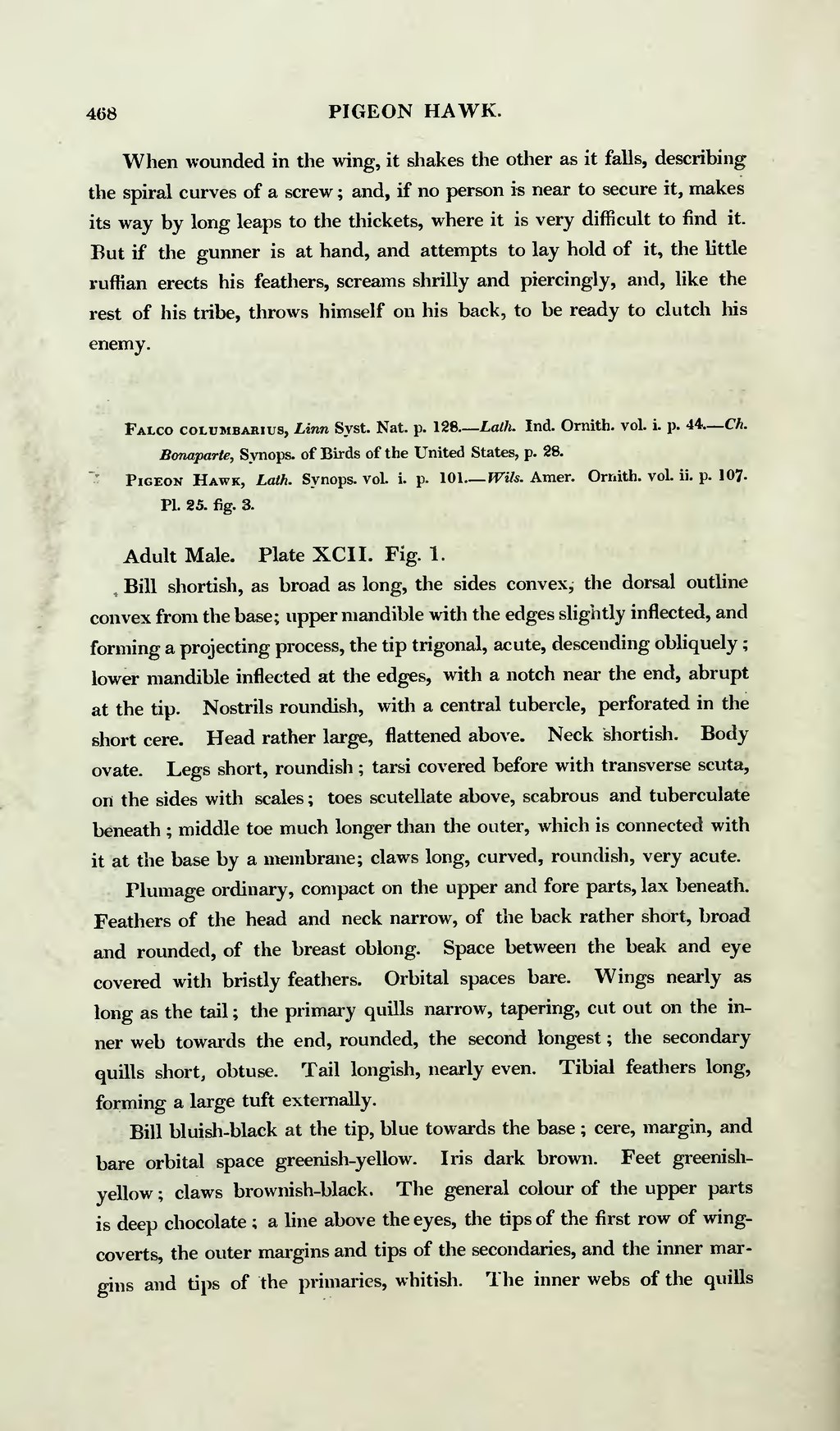When wounded in the wing, it shakes the other as it falls, describing the spiral curves of a screw; and, if no person is near to secure it, makes its way by long leaps to the thickets, where it is very difficult to find it. But if the gunner is at hand, and attempts to lay hold of it, the little ruffian erects his feathers, screams shrilly and piercingly, and, like the rest of his tribe, throws himself on his back, to be ready to clutch his enemy.
Falco columbarius, Linn. Syst. Nat. p. 128—Lath. Ind. Ornith. vol. i. p. 44.—Ch. Bonaparte, Synops. of Birds of the United States, p. 28.
Pigeon Hawk, Lath. Synops. vol. i. p. 101—Wils. Amer. Ornith. vol. ii. p. 107. Pl. 25. fig. 3.
Adult Male. Plate XCII. Fig. 1.
Bill shortish, as broad as long, the sides convex, the dorsal outline convex from the base; upper mandible with the edges slightly inflected, and forming a projecting process, the tip trigonal, acute, descending obliquely; lower mandible inflected at the edges, with a notch near the end, abrupt at the tip. Nostrils roundish, with a central tubercle, perforated in the short cere. Head rather large, flattened above. Neck shortish. Body ovate. Legs short, roundish; tarsi covered before with transverse scuta, on the sides with scales; toes scutellate above, scabrous and tuberculate beneath; middle toe much longer than the outer, which is connected with it at the base by a membrane; claws long, curved, roundish, very acute.
Plumage ordinary, compact on the upper and fore parts, lax beneath. Feathers of the head and neck narrow, of the back rather short, broad and rounded, of the breast oblong. Space between the beak and eye covered with bristly feathers. Orbital spaces bare. Wings nearly as long as the tail; the primary quills narrow, tapering, cut out on the inner web towards the end, rounded, the second longest; the secondary quills short, obtuse. Tail longish, nearly even. Tibial feathers long, forming a large tuft externally.
Bill bluish-black at the tip, blue towards the base; cere, margin, and bare orbital space greenish-yellow. Iris dark brown. Feet greenish-yellow; claws brownish-black. The general colour of the upper parts is deep chocolate; a line above the eyes, the tips of the first row of wing-coverts, the outer margins and tips of the secondaries, and the inner margins and tips of the primaries, whitish. The inner webs of the quills
